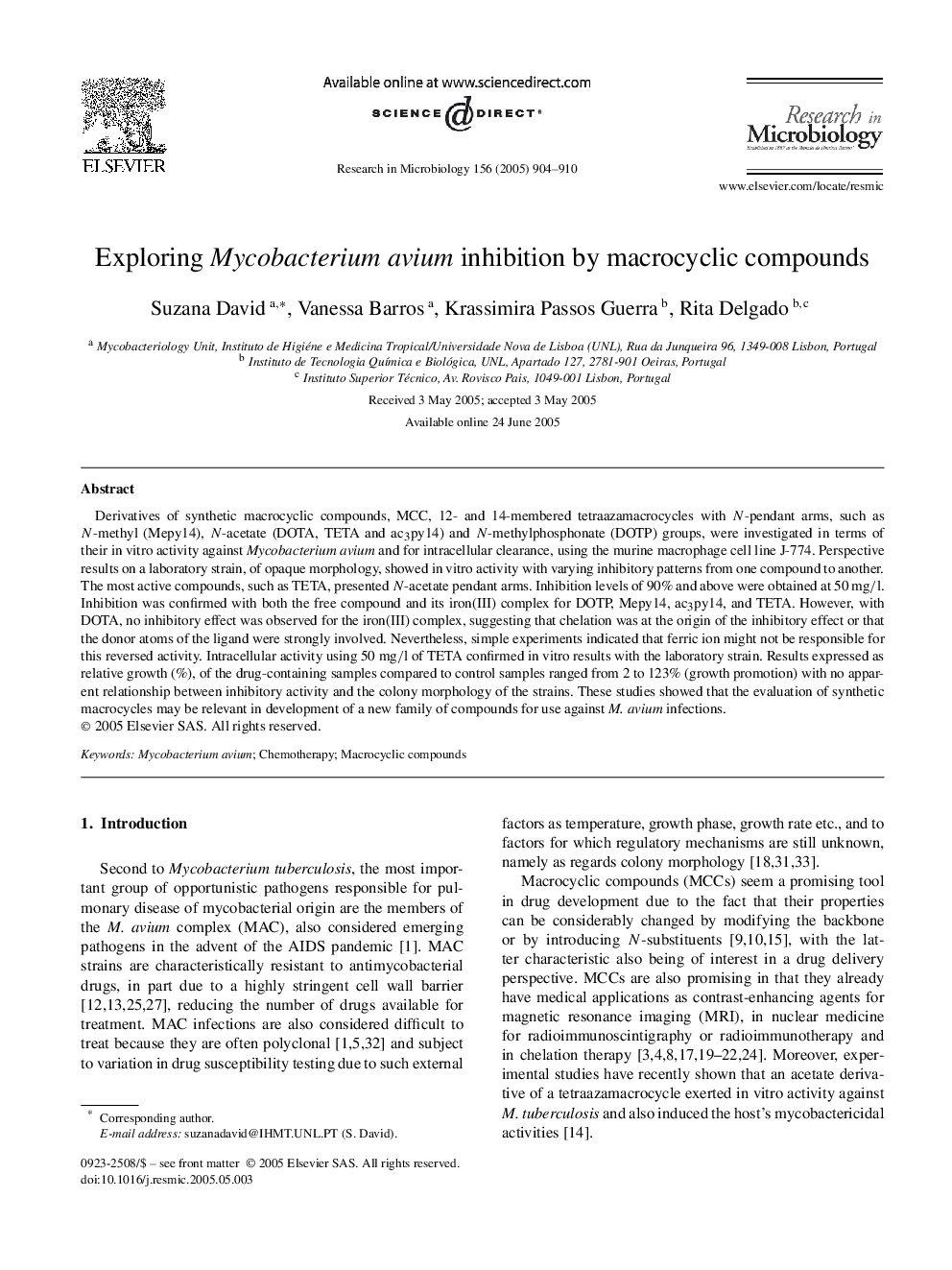| Article ID | Journal | Published Year | Pages | File Type |
|---|---|---|---|---|
| 9439847 | Research in Microbiology | 2005 | 7 Pages |
Abstract
Derivatives of synthetic macrocyclic compounds, MCC, 12- and 14-membered tetraazamacrocycles with N-pendant arms, such as N-methyl (Mepy14), N-acetate (DOTA, TETA and ac3py14) and N-methylphosphonate (DOTP) groups, were investigated in terms of their in vitro activity against Mycobacterium avium and for intracellular clearance, using the murine macrophage cell line J-774. Perspective results on a laboratory strain, of opaque morphology, showed in vitro activity with varying inhibitory patterns from one compound to another. The most active compounds, such as TETA, presented N-acetate pendant arms. Inhibition levels of 90% and above were obtained at 50 mg/l. Inhibition was confirmed with both the free compound and its iron(III) complex for DOTP, Mepy14, ac3py14, and TETA. However, with DOTA, no inhibitory effect was observed for the iron(III) complex, suggesting that chelation was at the origin of the inhibitory effect or that the donor atoms of the ligand were strongly involved. Nevertheless, simple experiments indicated that ferric ion might not be responsible for this reversed activity. Intracellular activity using 50 mg/l of TETA confirmed in vitro results with the laboratory strain. Results expressed as relative growth (%), of the drug-containing samples compared to control samples ranged from 2 to 123% (growth promotion) with no apparent relationship between inhibitory activity and the colony morphology of the strains. These studies showed that the evaluation of synthetic macrocycles may be relevant in development of a new family of compounds for use against M. avium infections.
Related Topics
Life Sciences
Immunology and Microbiology
Applied Microbiology and Biotechnology
Authors
Suzana David, Vanessa Barros, Krassimira Passos Guerra, Rita Delgado,
